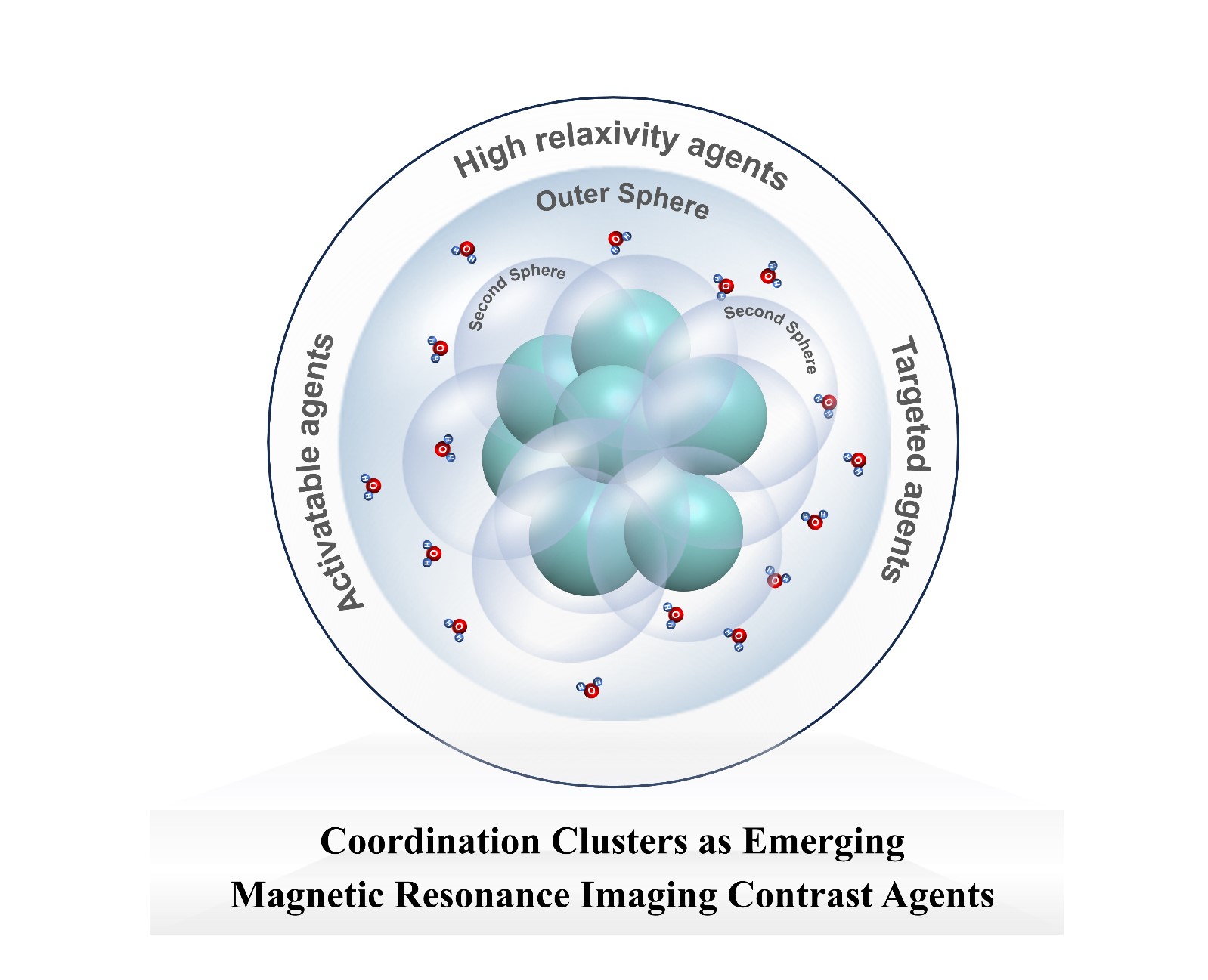Coordination clusters as MRI contrast agents
Published 09 October, 2025
Magnetic resonance imaging (MRI) has become an indispensable diagnostic modality in clinical medicine. Cluster-based magnetic resonance imaging contrast agents (MRICAs) demonstrate significant potential due to their high relaxivity, multi-mode imaging capability, and stimulus-responsive properties. These materials enable precise tumor diagnosis and treatment monitoring through targeted modifications such as antibodies or peptides, improving specificity toward tumor markers. They also enhance imaging of cardiovascular and neurological systems by increasing lesion contrast and reducing scan time. However, challenges remain regarding their metabolic pathways, long-term toxicity, and the lack of clinical guidelines for imaging parameter optimization. Another major hurdle is balancing targeted functionalization with structural stability, as introducing specific ligands may cause destabilization.
In a short review published in Magnetic Medicine, the authors highlight the latest advancements in MRI contrast agents, focusing on the influence of ligand selection and structural design on the relaxation rates of metal clusters as MRI contrast agents. The key points are as follows:
1. Advancing cluster and ligand design—using strategies like multidentate chelate coordination (MCC) or porous coordination clusters (PCCs)—to improve relaxivity, stability, and water coordination;
2. Enabling multimodal imaging by incorporating metal ions (e.g., Gd, Mn, Eu, Tb) for T1-T2 MRI, fluorescence, and photothermal imaging;
3. Enhancing biological safety and theranostic function by encapsulating clusters into polymer-based nanoparticles, which also allows drug loading for integrated diagnosis and treatment;
4. Developing new theoretical models beyond classic SBM theory to accurately describe multi-core cluster relaxation mechanisms.
In summary, although cluster-based MRICAs are still in early stages of development, their structural versatility and functional adaptability hold great promise for advancing precision medicine and high-sensitivity MRI applications.

Contact author:
Yu Wang, School of Future Technology, Xi'an Jiaotong University, Xi'an, 710049, China. 4121128016@stu.xjtu.edu.cn
Funder:
Medical-Engineering Cross Project of the First Affiliated Hospital of XJTU (QYJC02), Key Scientific and Technological Innovation Team of Shaanxi Province (No. 2020TD-001), Natural Science Foundation of China (No. 22375157), the Programme of Introducing Talents of Discipline to Universities (B23025), Key Laboratory Construction Program of Xi'an Municipal Bureau of Science and Technology, the Fundamental Research Funds for Central Universities (No. xtr052023002), “Scientists engineers” Team Building Project of Qin Chuang Yuan in Shaanxi Province of China (2022KXJ-088).
Conflict of interest:
All authors declare that they have no known competing financial interests or personal relationships that could have appeared to influence the work reported in this paper.
See the article:
Yu Wang, Yan-Zhen Zheng, Coordination clusters as emerging magnetic resonance imaging contrast agents, Magnetic Medicine, Volume 1, 2025,100022, https://doi.org/10.1016/j.magmed.2025.100022.